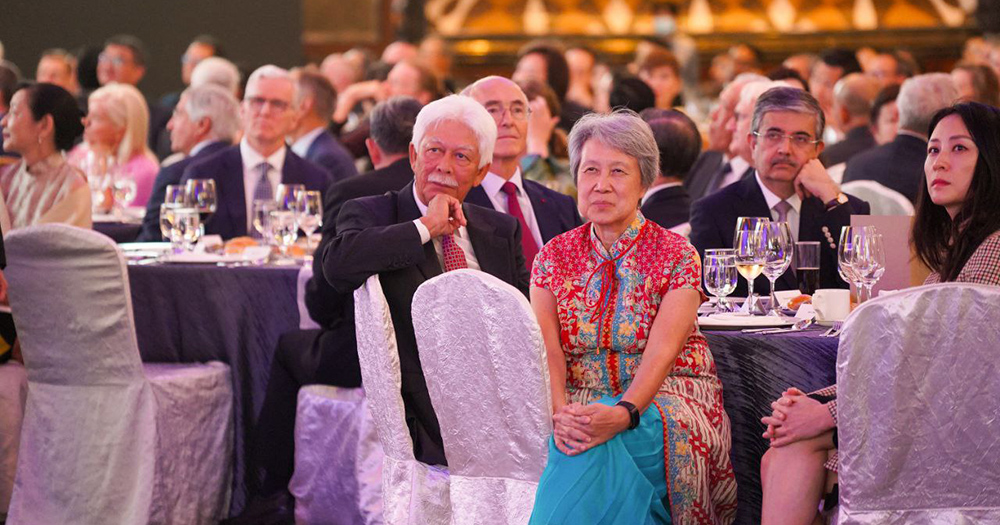In 2023, S'pore's resident total fertility rate of 0.97 a historic low, 36% of citizen marriages transnational
Singapore's demographic trends are dynamic.

The number of marriages and births in Singapore dropped in 2023.
The figures were published on Sep. 24 in the annual Population in Brief report by the National Population and Talent Division (NPTD) of the Prime Minister’s Office and its partner agencies.
The brief also reported that Singapore’s total population has exceeded 6 million for the first time.
The growth in the non-resident population contributed to more than half of the population increase from 2023.
As of June 2024, the country’s population hit 6.04 million, which marks a 2 per cent increase from 2023.
Fewer citizen marriages
According to the annual Population in Brief report released on Sep. 24, 2024, there were 24,355 citizen marriages in 2023, which is 1.7 per cent fewer than the record high of 24,767 citizen marriages in 2022, but higher than the 22,165 citizen marriages in 2019:
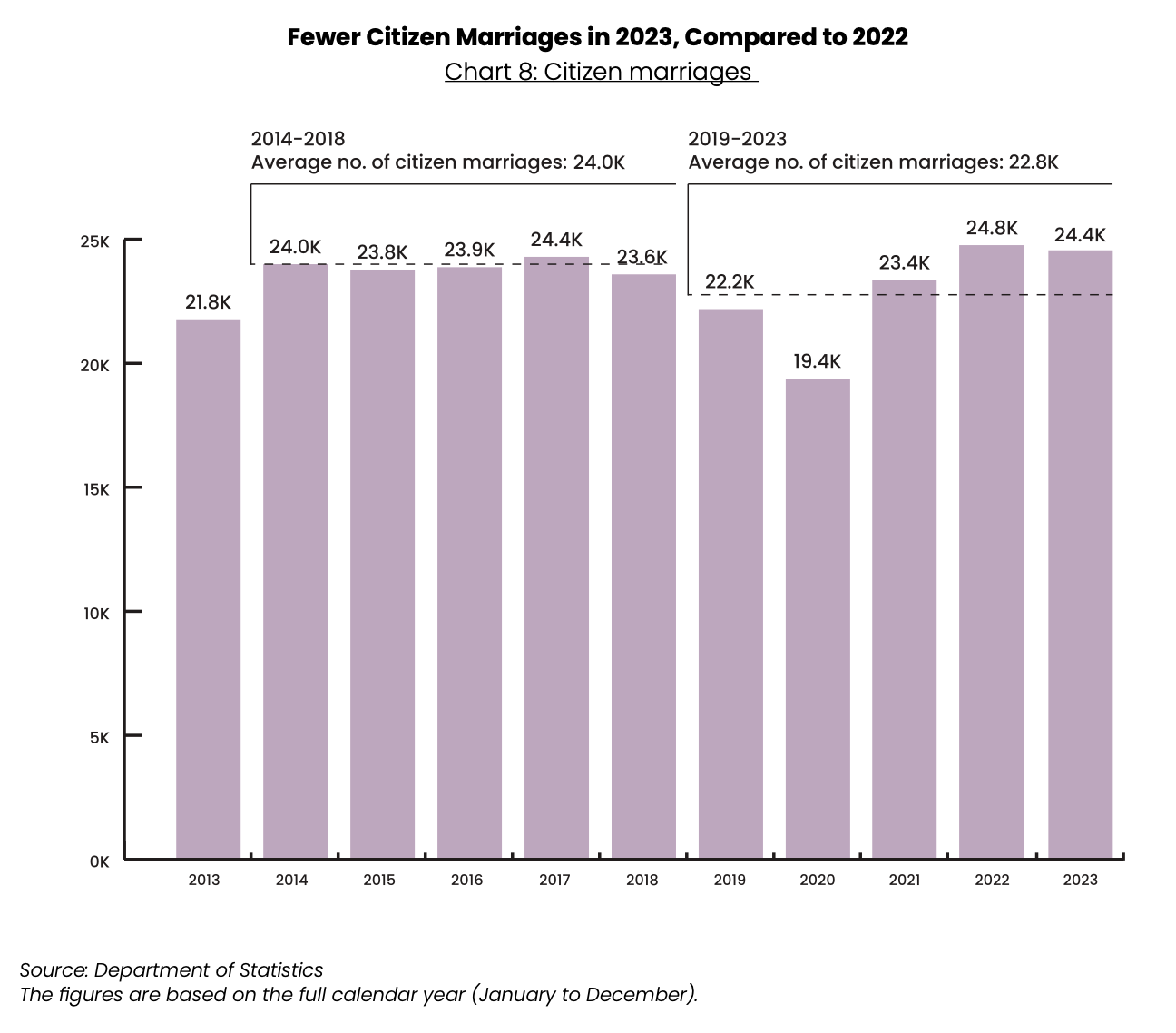 Screenshot from PMO.
Screenshot from PMO.
The average number of citizen marriages per year in the last five years, at 22,800, was also lower than the number for the preceding five years, at 24,000.
Median age at first marriage
The median age at first marriage for citizen grooms and brides also went up in 2023.
It was 30.7 and 29.0 years in 2023, up from 30.1 and 27.8 years respectively in 2013.
Inter-ethnic marriage
About one in six citizen marriages last year were inter-ethnic.
This proportion has remained largely stable in the last 10 years.
Singles up
Among the citizen population aged 25 to 49 years, there was a higher proportion of singles across almost all age groups in 2023, compared to 2013.
This was observed among both males and females:
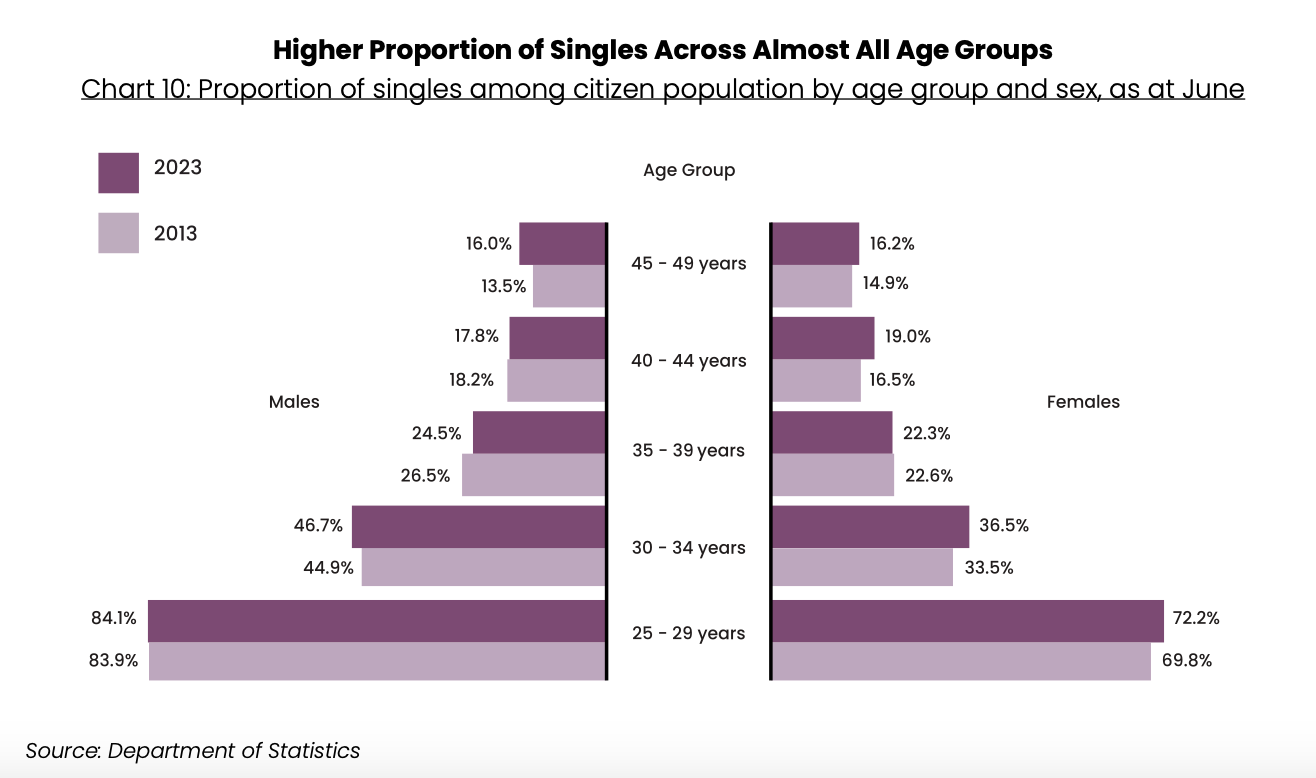 Screenshot from PMO.
Screenshot from PMO.
Fewer citizen births, historically low TFR
There were 28,877 citizen births in 2023, 5.1 per cent fewer than the 30,429 citizen births in 2022.
The average number of births per year in the last five years (31,100) was also lower than in the preceding five years (33,000)
The median age of citizen mothers at first birth was 31.4 years in 2023, up from 30.2 years in 2013:
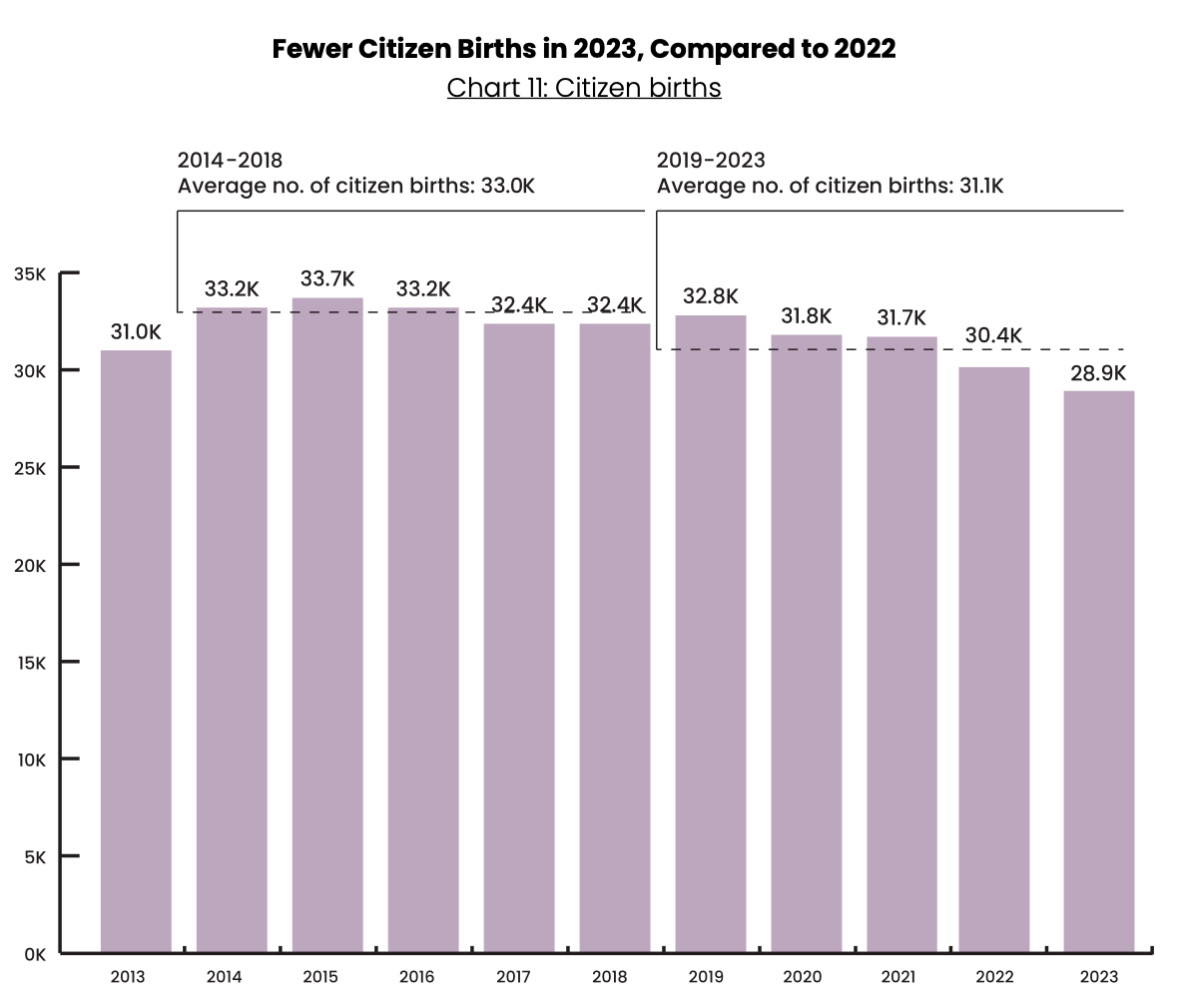 Screenshot from PMO.
Screenshot from PMO.
Historically low 0.97 TFR
The resident total fertility rate (TFR), which has generally been declining over the past few decades, reached a historic low of 0.97 in 2023.
According to the report, the decline may have been exacerbated by the Covid-19 pandemic, which resulted in economic uncertainty and disrupted marriage and parenthood plans for some Singaporean couples.
The report added:
The decline in TFR is also happening in other advanced societies, where more people are postponing family formation and having fewer children due to reasons such as the prioritisation of careers, shifting attitudes towards marriage and parenthood, and concerns about child-raising costs.
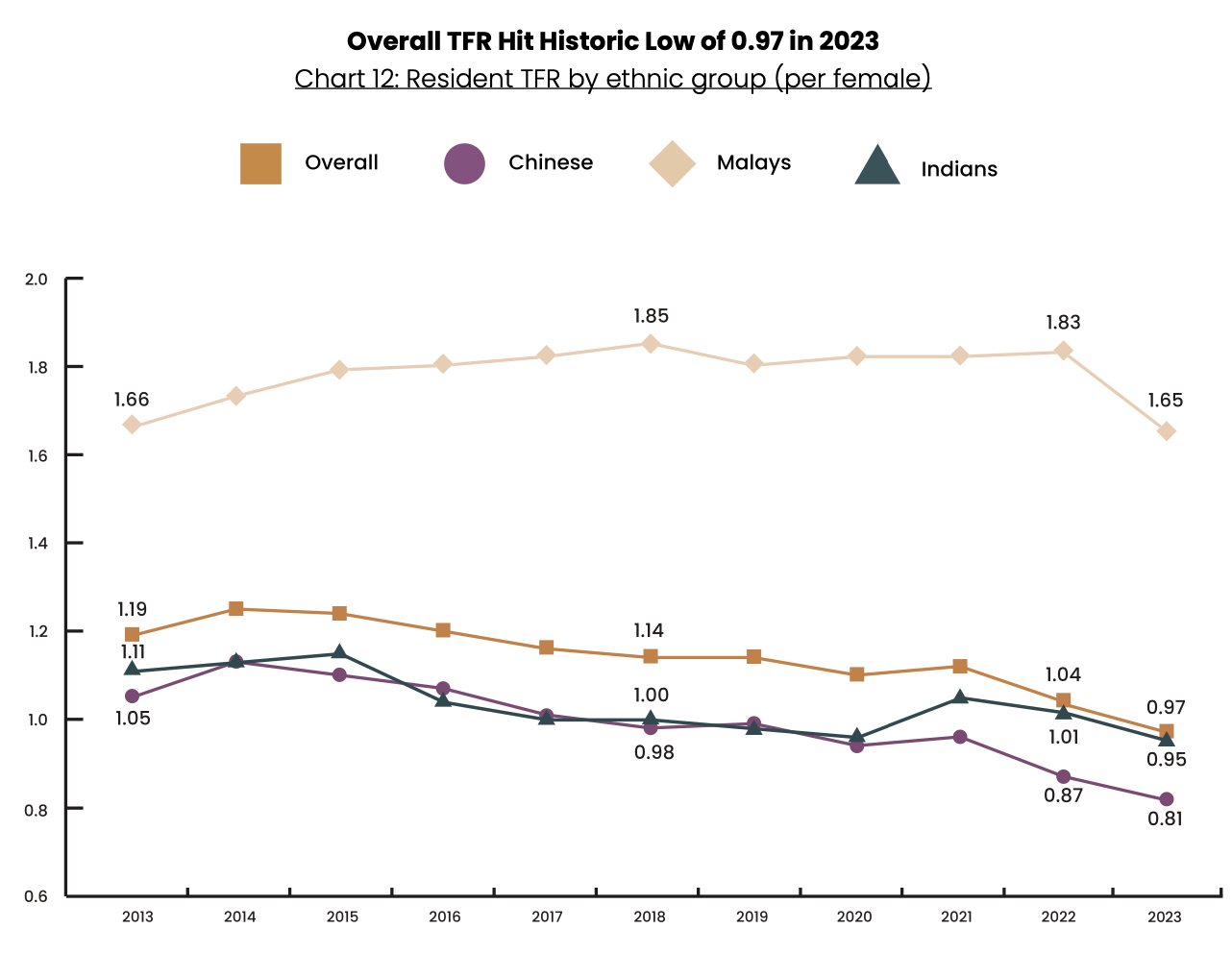 Screenshot from PMO.
Screenshot from PMO.
Transnational families
The report also highlighted a growing proportion of transnational marriages, referring to marriages between a citizen and a non-citizen, amongst citizen marriages.
In the past decade, more than one-third of citizen marriages every year were transnational marriages.
The proportion of transnational marriages dipped in 2020 and 2021, likely due to Covid-related travel restrictions, but has since increased.
Transnational marriages made up 36 per cent of citizen marriages in 2023, similar to the pre-Covid proportion of 37 per cent in 2019.
As of June 2023, 176,900 citizens were married to non-citizen spouses.
Of the 28,877 citizen births in 2023, more than one in four were born to couples that comprised citizens and non-citizens.
Changing profile of transnational marriages
NPTD also highlighted that three in four transnational marriages today are between citizen grooms and non-citizen brides and that while this has been stable over the last decade, the profile of transnational families has changed over the past decade.
Non-citizen brides are now older, and have higher educational qualifications, at the point of marriage.
The proportion of non-citizen brides aged below 25 decreased from 18.0 per cent in 2013 to 6.5 per cent in 2023, and the proportion with a university degree increased from 36.6 per cent in 2013 to 47.4 per cent in 2023.
For non-citizen grooms, the profile has also shifted towards higher age ranges, with the proportion aged over 35 increasing from 31.3 per cent in 2013 to 40.3 per cent in 2023.
The proportion of non-citizen grooms with degree qualifications in 2023 (57.3 per cent) was comparable to 2013 (60.8 per cent).
Top photos via Canva.
MORE STORIES




















